[Originally published as Behemoth: A Sauropod Dinosaur]
The ancient Book of Job[i] refers to Behemoth. What was it? Consider the description of this animal from Job 40:6–24:
Then the Lord answered Job out of the whirlwind, and said: “Now prepare yourself like a man; I will question you, and you shall answer Me… Look at Behemoth, which I made along with you and which feeds on grass like an ox. What strength it has in its loins, what power in the muscles of its belly! Its tail sways like a cedar; the sinews of its thighs are close-knit. Its bones are tubes of bronze, its limbs like rods of iron. It ranks first among the works of God, yet its Maker can approach it with his sword. The hills bring it their produce, and all the wild animals play nearby. Under the lotus plants it lies, hidden among the reeds in the marsh. The lotuses conceal it in their shadow; the poplars by the stream surround it. A raging river does not alarm it; it is secure, though the Jordan should surge against its mouth. Can anyone capture it by the eyes, or trap it and pierce its nose?
In Job, God describes 13 of His created animals, such as an ostrich, horse and deer, then caps off the discussion by telling Job about His two grandest creations: Behemoth and Leviathan. God calls Behemoth the “first of all of His ways,” using the Hebrew term (re’shiyth), which means first in a rank, the chief, the most supreme of His creative works.
When we scan through all land-dwelling creatures—both living and extinct—which one comes up as the “first in rank,” the most colossal or the chief? Clearly the sauropod dinosaur. Pairing God’s Word that Behemoth is the grandest creature He ever made with the fact that sauropods are the largest land creatures we’ve ever found should give us a clue to Behemoth’s identity.
Sauropods were huge. The largest one found to date (named Patagotitan mayorum) was over 120 feet long—that’s 10 freeway lanes across! At a weight of 76 tons, it’s a wonder these creatures could even walk. Let’s review some amazing sauropod anatomy, starting first by looking at one of their unique design features: their long necks.
The necks of the sauropod dinosaurs were by far the longest of any animal, six times longer than that of the world record giraffe and five times longer than those of all other terrestrial animals.[ii]
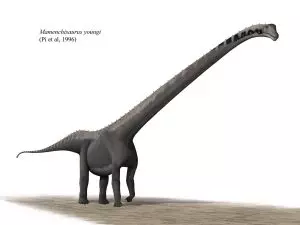
Researchers for years thought sauropod necks would be too heavy for their length. Leading sauropod researcher Dr. Matthew Wedel notes: “They were marvels of biological engineering, and that efficiency of design is especially evident in their vertebrae, the bones that make up the backbone.”[iv] After spending years studying the long necks of sauropods, Dr. Wedel revealed that the vertebrae of these massive sauropods had genius, weight saving air spaces.[v]
He wrote, “one of [a] Sauropod’s four and a half foot [long] vertebrae [sic] would have been surprisingly light and could reach 90% air by volume!”[vii]
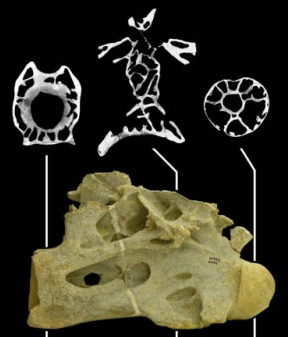
More exhaustive studies have revealed that the vertebrae of most sauropods were often 50–60% air by volume, with some as high as 90%.[viii] While Dr. Wedel estimates that this would only reduce the overall weight of some of these creatures by 8–10%, most of the weight would be removed from the critical areas of the neck, where extra weight would have been challenging for the creature to lift its head, eat, or turn around.
Yet there’s more—these big creatures needed lightweight vertebrae to enable them to lift their heads—but these extra-long necks also needed design such that the animal could eat, drink, and move its head without its neck folding in half or pinching vital nerves, the trachea (for breathing), or esophagus (for eating). Having an extra-light structure was only part of the solution.
While their air-charged vertebrae may solve the puzzle of how they could lift and move their massive heads and necks, it doesn’t solve the challenge of how they could possibly inhale enough oxygen through their tiny nostrils, which were only about twice the size of those on a living horse! How can a 140,000+ pound animal inhale enough oxygen through such tiny nostrils? Perhaps they thrived better in a world before Noah’s Flood when the oxygen levels were likely higher.[ix]
In Job, God describes Behemoth’s diet: eating grass like an ox. In 2005 researchers found grass in sauropod coprolites in India, and some palaeobotanists are even saying that this will cause a “rewrite in our understanding of dinosaur evolution,” because evolution holds that grass didn’t evolve until millions of years after the dinosaurs had gone extinct.[x]
God describes Behemoth’s strength in his hips and power in his stomach muscles. Again, we have a strong clue that Behemoth was a sauropod dinosaur because, while many animals have strong hips and stomach muscles, none were as strong or central as certain sauropods. The muscular and connective tissue structures around the hips and stomach were necessary for sauropods to move, walk, turn, and eat.
For some sauropods, like the Diplodocus, its highest point of its core body was the hips and its whole body balanced on the hips, front-to-back. Diplodocus was able to rear up on its back legs and balance on its tail like a tripod, making use of the hips to support not just the back half of its body but the front half too. This required enormous strength in the hip and stomach muscles, considering they lifted tons of their own body into the air. Below the hips was an incredible weight distribution system that went from a massive femur (which in some cases was nearly eight feet long), to two shin bones, then five foot bones, and then five toes.
Behemoth’s tail also closely matched those of sauropods. God describes that he “moves his tail like a cedar tree” and follows this by stating, “the sinews of his thighs are tightly knit.” Paleontologists have learned from the muscle attachment locations in their bones that the tightly-knit structure of Behemoth’s thighs and hips actually made his tail sway from side-to-side with each step, much as a cedar tree does when it sways in the wind![xi] Tail drag marks are only rarely found behind sauropod footprints, indicating their tails were raised while they walked. It’s difficult to think of a creature that fits this Biblical description better than a sauropod dinosaur.
God describes his bones “like beams of bronze.” Most Bible versions translate this phrase as “tubes of bronze,” “conduits of bronze,” or “pipes of brass,” which conveys both “strength” and being hollow like a channel or a tube. This matches the fact that that sauropods had the largest leg bones of any animal, and they are in fact just like tubes of metal, having a hard outer casing and spongy marrow and veins on the inside.
Then God says that its “ribs are like bars of iron.” Unlike much of the sauropod’s skeleton that was spongy and filled with air for weight savings, its ribs were fully ossified—they were made of solid bone![xii] Again, we see a solid match between God’s description of Behemoth and a sauropod dinosaur.
God even describes Behemoth’s habitat: “He lies under the lotus trees, in a covert of reeds and marsh. The lotus trees cover him with their shade” and “The willows by the brook surround him.” This was a creature that had to be near lots of green food—living in a lush, tropical environment. Large sauropods had to eat a half a ton of vegetation every day, and they likely had to eat all day long to consume this amount of food.
Next God says: “Indeed the river may rage, yet he is not disturbed; He is confident, though the Jordan gushes into his mouth.” Why would God point out that this animal can stand in a rushing river? Lots of animals can do this, depending on the size of the rushing river. In this case, God said, “the river may rage, yet he is not disturbed,” and that Behemoth is confident even though this raging river should gush into his mouth. The Jordan river is the largest river in Palestine and it currently flows at only 15% of the rate it flowed in the past.[xiii] Even so, in the winter this river would be incredibly difficult to cross, and it would take a very sizable animal to stand undisturbed in the rushing current and, even more, let the current gush into its mouth! Some of the larger sauropods stood over 20 feet at the shoulders and weighed over 70 tons. Creatures of this size and mass could withstand a raging river better than any others.
Even with all this evidence, some say that Behemoth was just a mythical creature. Why would God try to display His awesome creative power by describing something that never existed? Anyone can do that. And why would God say that Behemoth was the “chief” of all His creations after describing 13 real, still-living animals in the same passage? Why go through all the trouble to describe Behemoth as a grass-eating animal that lies peacefully in the shadow of the river plants along with his physical description, diet, and habitat—all of which happen to fit a known creature: a sauropod dinosaur?
Job 40 lists 14 characteristics of this creature, and a sauropod dinosaur seems to fit the description better than any other creature, alive or extinct. Certain Bible footnotes[xiv] state that Behemoth was a hippo, elephant, or crocodile but these do not come close to matching all 14 characteristics God used to describe Behemoth. They certainly are not the “first in rank” or “chief” of God’s creations. Would God tell Job to “gird up his loins” to behold the “chief of his creations” just to show off a hippo? An elephant? These creatures were plentiful! They don’t have tails that sway like cedar trees, and these animals have been captured and killed by man throughout history.
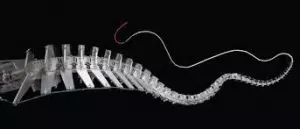
God says that only Behemoth’s Creator can approach him, that he cannot be captured by humans when he is on watch, and that no one can use barbs to pierce his nose. These make sense for sauropod dinosaurs with their towering heads and huge size. Its long tail also makes him unapproachable. Based on fossils, some sauropods could cover a 200-foot circle with deadly force using their sometimes 50-foot-long tails.[xv] Some sauropods could probably create sonic booms with their tails—just like a whip.[xvi]
It’s not by chance that God says to Job that Behemoth can only be approached by his creator. To this day, elephants and hippos are surrounded by hunters and killed, but good luck even getting near this creature to put a snare in its nose.
These features—weight-bearing hips, legs, feet, and toes, incredible air-filled vertebrae, and others—show up already formed in the ~300 sauropods that have been discovered in sedimentary layers laid down by the Flood. Yes, there is variability within the sauropod kind, but these animals have been grouped by these (and other) common design characteristics. If God Himself created these animals and placed them on the Earth, then no wonder they had every aspect of their essential design features already in place and fully integrated from the start.
[i] “Fast Facts about the Bible.” Bible Resources: http://bibleresources.org/bibleresources/bible-facts/ (January 26, 2017).
[ii] M. P. Taylor and M. J. Wedel. “Why sauropods had long necks; and why giraffes have short necks.” PeerJ 1: (2013), e36.
[iii] Image Credit: Wikipedia (https://en.wikipedia.org/wiki/Mamenchisaurus) (January 26, 2017).
[iv] M.J. Wedel, “Aligerando a los gigantes (Lightening the giants).”
¡Fundamental! 2007, 12:1–84. [in Spanish, with English translation]
[v] See also: “Mechanical implications of pneumatic neck vertebrae in sauropod dinosaurs.” Daniela Schwarz-Wings, Christian A. Meyer, Eberhard Frey, Hans-Rudolf Manz-Steiner, Ralf Schumacher Proc. R. Soc. B 2010 277 11–17.
[vi] Wedel, 2007.
[vii] Matt Wedel, “Hunting the Inflatable Dinosaur,” University of California Museum of Paleontology: www.ucmp.berkeley.edu/science/profiles/wedel_0609.php (January 26, 2017).
[viii] Taylor & Wedel, 2013.
[ix] While sauropods also may have lived post-flood (as indicated by Job 40), their design features provide clues that they likely thrived better in a pre-flood environment.
[x] David Catchpoole, “Grass-eating Dinos: A ‘Time-travel’ Problem for Evolution (www.creation.com/grass-eating-dinos) (August 22, 2017); Brian Thomas, “Dinosaurs Ate Rice,” www.icr.org/article/6428/ (August 22, 2017).
[xi] Nicole Klein, Kristian Remes, Carole T. Gee, and P. Martin Sander, Biology of the Sauropod Dinosaurs Understanding the Life of Giants (Indiana University Press, 2011).
[xii] M. Hallett & M. Wedel, The Sauropod Dinosaurs: Life in the Age of Giants, (Johns Hopkins University Press, 2016).
[xiii] Patrick Moser, Jordan River could die by 2011, Phys Org. www.phys.org/news/2010-05-jordan-river-die.html (May 2, 2010) (August 22, 2017).
[xiv] For example, see the English Standard Version or the Life Application Study Bible notes.
[xv] J. Carballido, D. Pol, A. Otero, I. Cerda, L. Salgado, A. Garrido, J. Ramezani, N. Cúneo, M. Krause, “A New Giant Titanosaur Sheds Light on Body Mass Evolution Amongst Sauropod Dinosaurs,” Proceedings of the Royal Society B(August 9, 2017).
[xvi] Nathan P. Myhrvold and Philip J. Currie, Supersonic Sauropods? Tail Dynamics in the Diplodocids, Paleobiology 23 (December, 1997): 393—409; Benjamin Meyers, W. Wayt Gibbs, “Did a Dinosaur Break the Sound Barrier before We Did?” (www.scientificamerican.com/video/did-a-dinosaur-break-the-sound-barrier-before-we-did/) (November 3, 2015) (August 22, 2017).
[xvii] Dattatreya Mandal, Hexapolis, Physical Model To Show How Dinosaurs May Have Whipped Their Tails In Supersonic Speed (October 16, 2015).
(www.hexapolis.com/2015/10/16/physical-model-to-show-how-dinosaurs-may-have-whipped-their-tails-in-supersonic-speed/) (August 23, 2017).

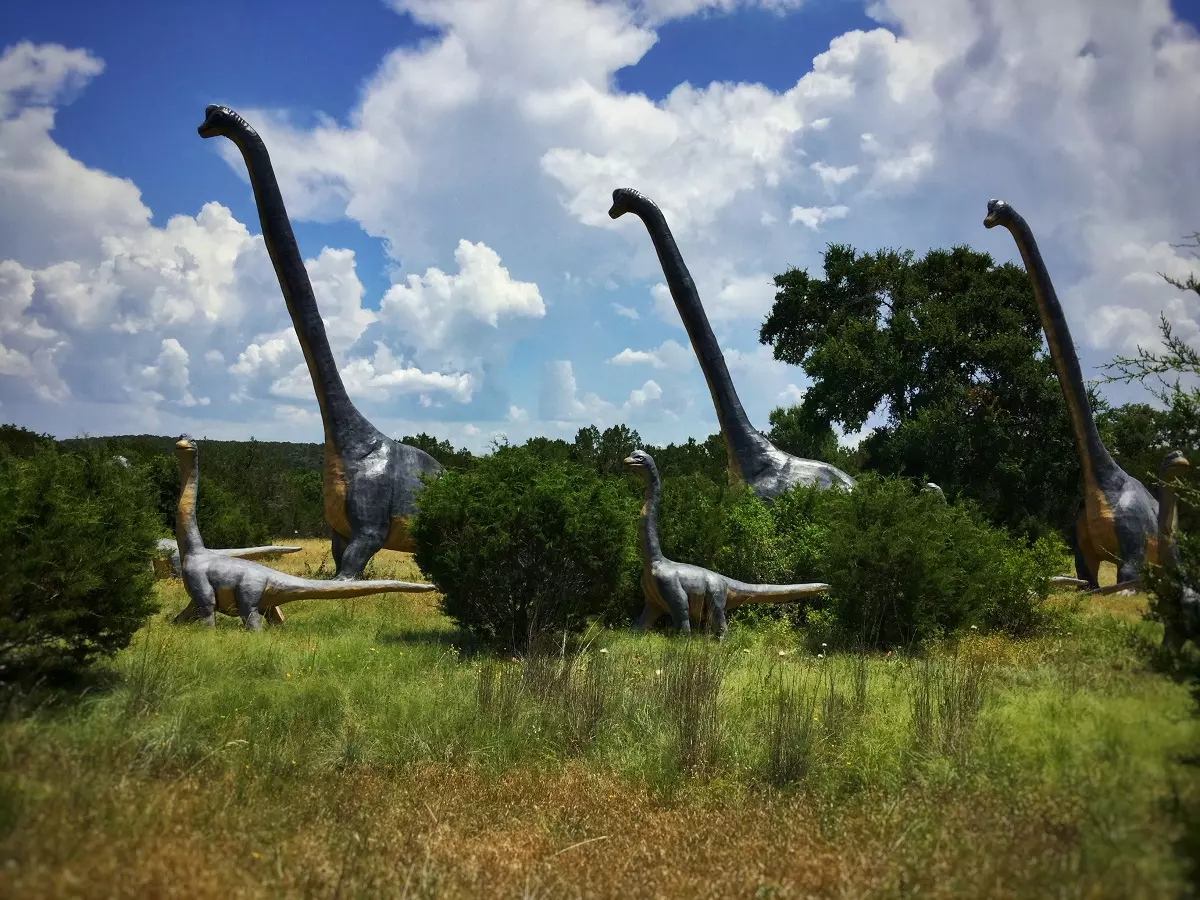





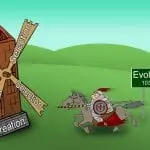
Interesting information. . . But I saw nothing relative to archaeology. . . Archaeology should include some human artifact associated with dinosaurs – like the thousands of sculptures from the culture of Asia – which feature dragons that appear to represent various kinds of known dinosaurs, or composite creatures that possess features of a number of different types of dinosaurs.
Shouldn’t this article be in a category of Paleontology or Paleo-biology?
Hi, Jim, this *is* under the Paleontology category, but the way the website orders things Paleontology falls under the Archaeology category. If you want to write more about such sculptures, etc. as you mention, you’re welcome to join us and write about them. Just we have to be very careful about the pictures we use and always site as credible sources as possible.
God bless!